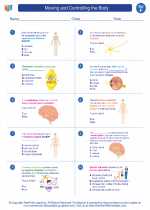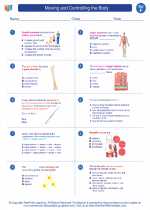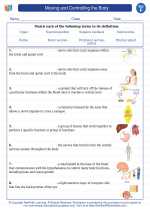Moving and Controlling the Body
Our ability to move and control our bodies is made possible by the musculoskeletal system, which includes muscles, bones, and joints. The brain and nervous system also play a crucial role in controlling our movements. Let's take a closer look at how these systems work together to enable us to move and coordinate our actions.
The Musculoskeletal System
The musculoskeletal system is responsible for providing the body with structure, support, and the ability to move. It is made up of bones, muscles, and joints. Bones provide the framework for the body and protect vital organs, while muscles work together with the bones to produce movement. Joints are the connections between bones and allow for flexibility and movement.
The Nervous System
The nervous system is responsible for transmitting signals between the brain and the rest of the body. It consists of the central nervous system (the brain and spinal cord) and the peripheral nervous system (nerves that extend throughout the body). The brain sends signals to the muscles to initiate movements and coordinates the body's actions.
Study Guide
- What is the role of the musculoskeletal system in the body?
- Describe the function of bones, muscles, and joints in the musculoskeletal system.
- How does the nervous system contribute to controlling body movements?
- Explain the difference between the central nervous system and the peripheral nervous system.
- Discuss the importance of coordination between the musculoskeletal system and the nervous system in enabling smooth and precise movements.
Understanding how the musculoskeletal system and the nervous system work together is essential for comprehending the body's ability to move and coordinate its actions. By studying these systems, you can gain a deeper appreciation for the complexity and sophistication of the human body.
.◂Science Worksheets and Study Guides Sixth Grade. Moving and Controlling the Body

 Worksheet/Answer key
Worksheet/Answer key
 Worksheet/Answer key
Worksheet/Answer key
 Vocabulary/Answer key
Vocabulary/Answer key
 Vocabulary/Answer key
Vocabulary/Answer key
 Vocabulary/Answer key
Vocabulary/Answer key
